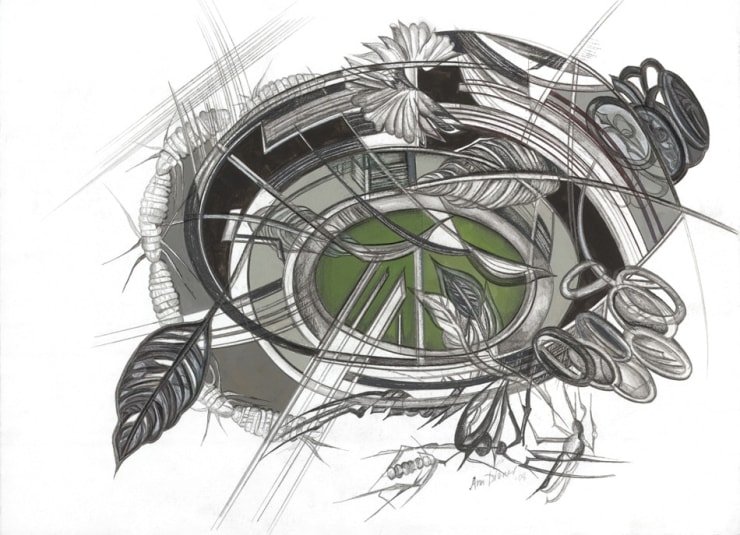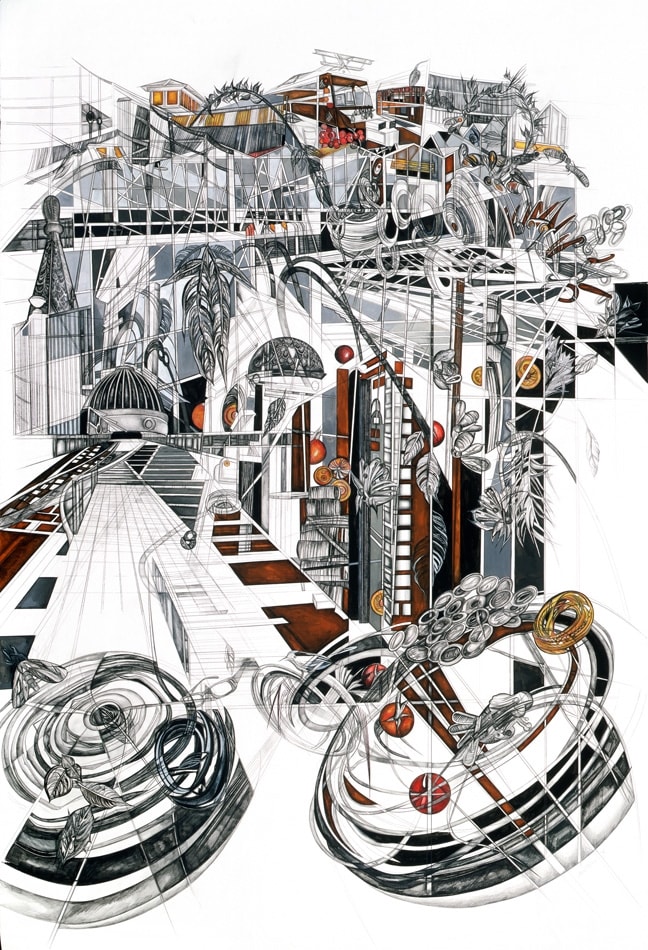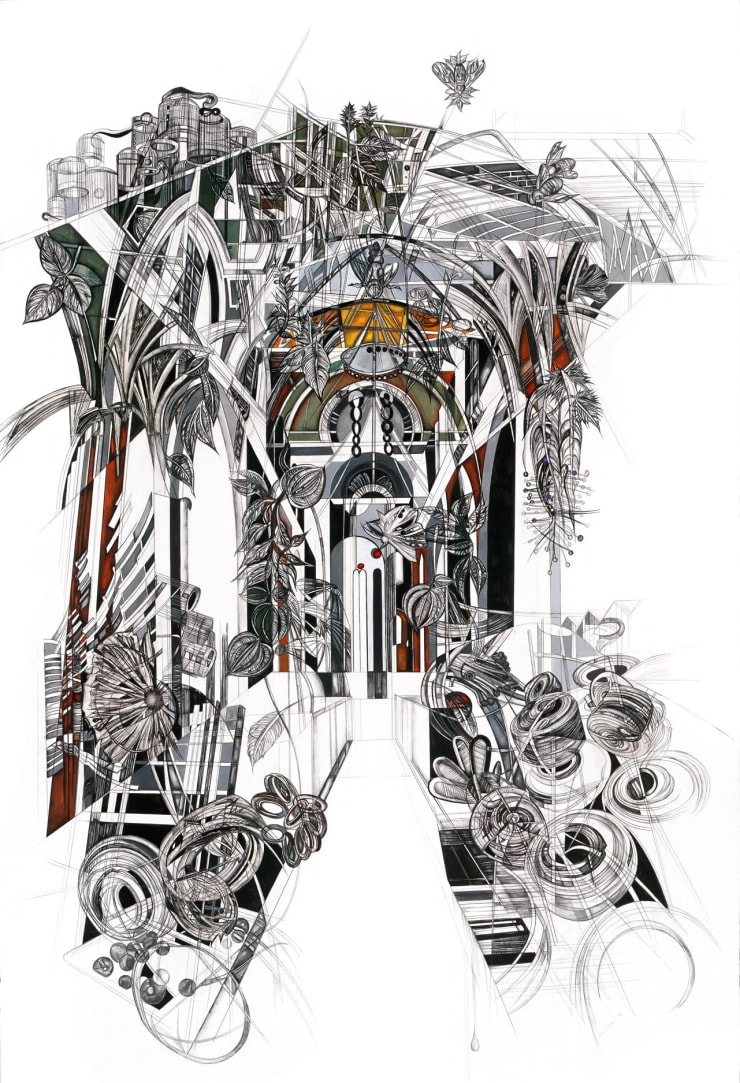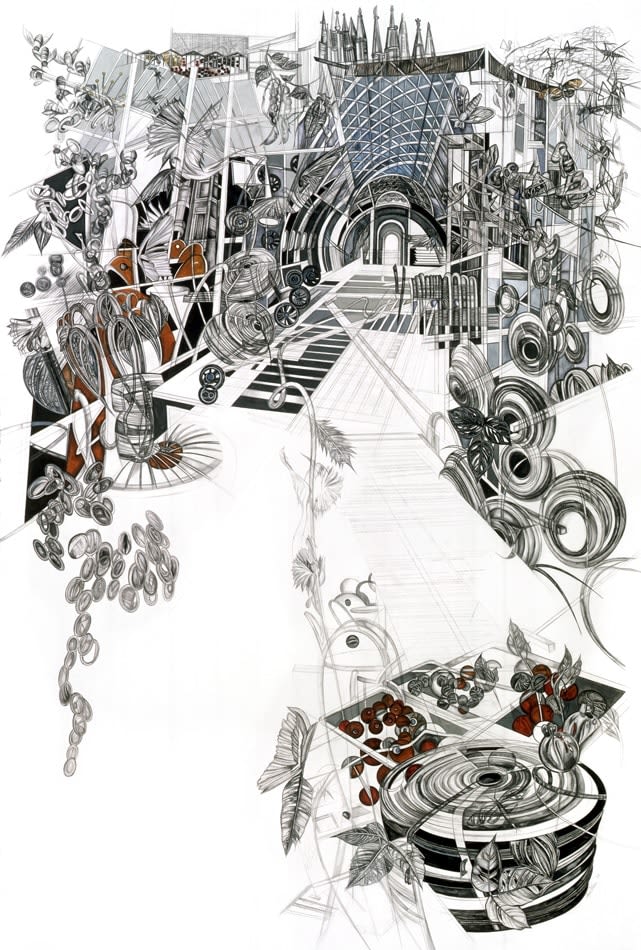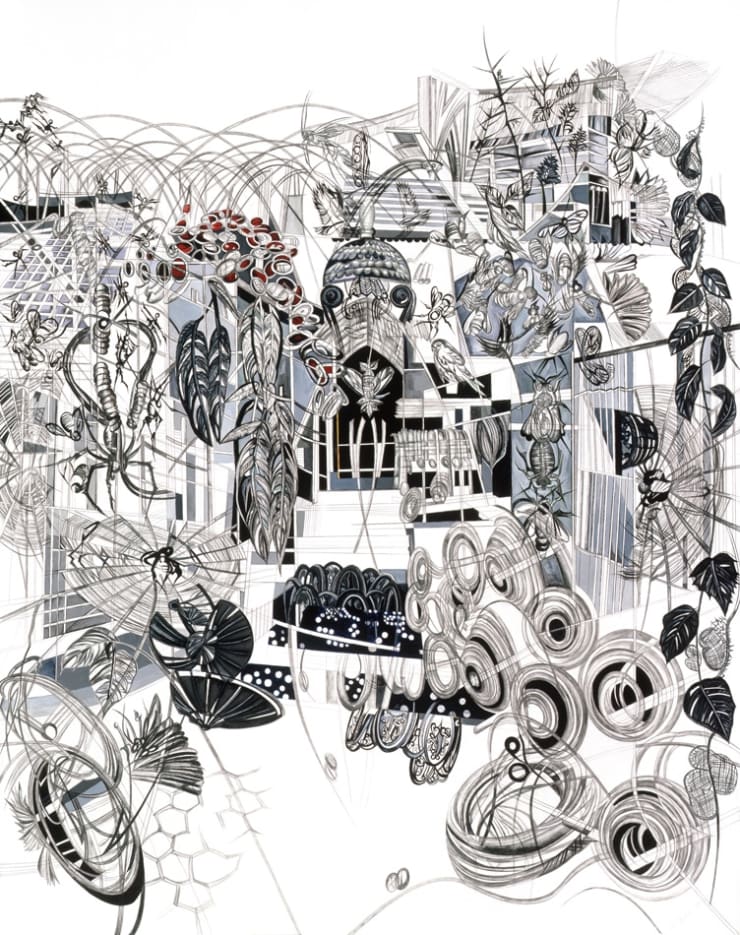Ann Diener: Cathedrals of Commerce
The debut solo exhibition of Ann Diener’s large format, graphite on paper drawings are technically and visually a tour de force. Diener’s work has been acquired by the leading contemporary drawing collections. This exhibition follows a 2007 group exhibition entitled, Looky See, at Otis College of Art & Design during the summer. Her work has been favorably reviewed by Christopher Knight of the Los Angeles Times, who said, “Diener is fabricating fantastic voyages distinctly her own. The natural world engages in combat with intimations of a built environment, in drawings that temper dark apocalypse with wild exhilaration.” Diener is based in Santa Barbara and earned her B.A. from University of California, Los Angeles and her M.F.A from University of California, Santa Barbara.
The debut solo exhibition of Ann Diener’s large format, graphite on paper drawings are technically and visually a tour de force. Diener’s work has been acquired by the leading contemporary drawing collections. This exhibition follows a 2007 group exhibition entitled, Looky See, at Otis College of Art & Design during the summer. Her work has been favorably reviewed by Christopher Knight of the Los Angeles Times, who said, “Diener is fabricating fantastic voyages distinctly her own. The natural world engages in combat with intimations of a built environment, in drawings that temper dark apocalypse with wild exhilaration.” Diener is based in Santa Barbara and earned her B.A. from University of California, Los Angeles and her M.F.A from University of California, Santa Barbara.
“With an abiding interest in contemporary agrarian imagery, Ann Diener considers the ubiquitous farming greenhouse—plastic, portable, and repetitive. These newest compositions translate her familiar landscape references into an abandoned architecture subsumed by energetic, replicating forms. Diener’s “cathedrals,” with strong perspectives and yawing entries, lull viewers into spaces which are overrun with stylized organic growth. While the container is suggested through architectural references, vertical trajectories and passageways, its past function seems turned to uncertain, ominous purposes. Sinuous and structural, Diener’s unpopulated scenes suggest an aftermath of industry and the persistence of a certain kind of nature. Sprouting vines, rounded fruits, and outsized insects mark, surround, and otherwise subsume the faceted greenhouse.
With Diener’s touch serrated rooflines become an ominous architecture of regularity. Domes, peaks, and cupolas align suggestive of the piston force and form of an internal combustion engine. To these clean, mechanical lines Diener blends plant-like forms, radiating webs, cellular clusters and feathered patterns. The organic amid the structural recalls the exuberance of late-19th- and early twentieth-century Art Nouveau—a period when the greenhouse still was a marvel of engineering and control, signaling affluence and exoticism. In agribusiness, the greenhouse remains a site of protection, not of the rarified specimen, but of the high yield bounty. Abundance marks Diener’s compositions, from pollinating bees to faceted forms which, in their cubistic style, suggest simultaneity.
Heavily worked yet delicately placed, Diener’s repeated images convey a startling energy and seem at once in motion and frozen in time. Diener illuminates essentially grayed compositions with the white of the paper and selective passages of green, red, and ocher, as well as the occasional violet marking. Angled trajectories and spinning forms hum amid an expanse of the unmarked sheet and clean borders. Bold graphite marks and prisma color passages are further defined by crisply integrated collage elements. These clean edges and positive/negative pairings allow Diener to build a composition of parts. The edge of the cut forms, often bits of past drawings, cleanly demarcate a new space, resulting in a patchworked vigor—a stained-glass effect of line against color and texture.
These elaborately built compositions convey both abundance and neglect. Disorienting centers are framed in excess, like an inverted cornucopia. Through her formal combination of precision and intuition, Diener creates spaces which are a contemporary puzzle: seductive and haunting, celebratory and cautionary.”
Kathryn Kanjo, Director
University Art Museum, UC Santa Barbara
-
 Ann Diener, Wire Fragment #3, 2008
Ann Diener, Wire Fragment #3, 2008 -
 Ann Diener, Wire Fragment #2, 2008
Ann Diener, Wire Fragment #2, 2008 -
 Ann Diener, Wire Fragment #1, 2008
Ann Diener, Wire Fragment #1, 2008 -
 Ann Diener, Wire Fragment #4, 2008
Ann Diener, Wire Fragment #4, 2008 -
 Ann Diener, Cathedral #3, 2008
Ann Diener, Cathedral #3, 2008 -
 Ann Diener, Cathedral #2, 2008
Ann Diener, Cathedral #2, 2008 -
 Ann Diener, Cathedral #1, 2008
Ann Diener, Cathedral #1, 2008 -
 Ann Diener, Cathedral #4, 2008
Ann Diener, Cathedral #4, 2008 -
 Ann Diener, Cathedral Panel #1, 2008
Ann Diener, Cathedral Panel #1, 2008 -
 Ann Diener, Cathedral #5, 2008
Ann Diener, Cathedral #5, 2008


